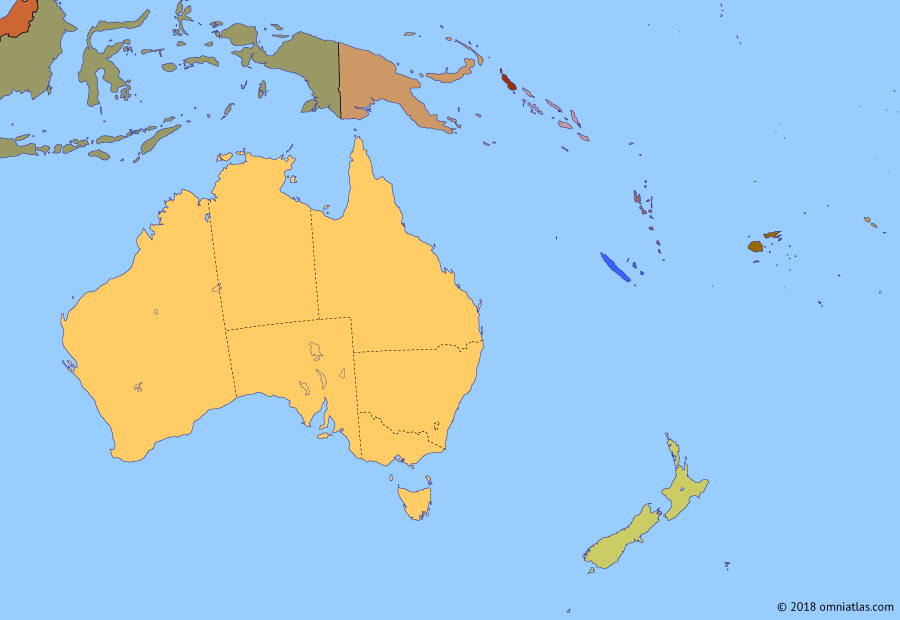Australasia 1990: Bougainville Conflict
Bougainville Conflict
17 May 1990 Bougainville Conflict
26 Jul 2003 Policing the Southwest Pacific
15 Sep 2021 AUKUS
15 Jan 2024 Australasia Today
When Papua New Guinea (PNG) gained independence from Australia in 1975, the island of Bougainville - geographically part of the Solomons - immediately attempted to secede but was persuaded to stay on in return for greater autonomy. However, tensions continued to rise over mining in Bougainville and in 1988 conflict broke out. In a nine-year war, PNG was largely expelled from the island and eventually agreed to a New Zealand-sponsored truce.
